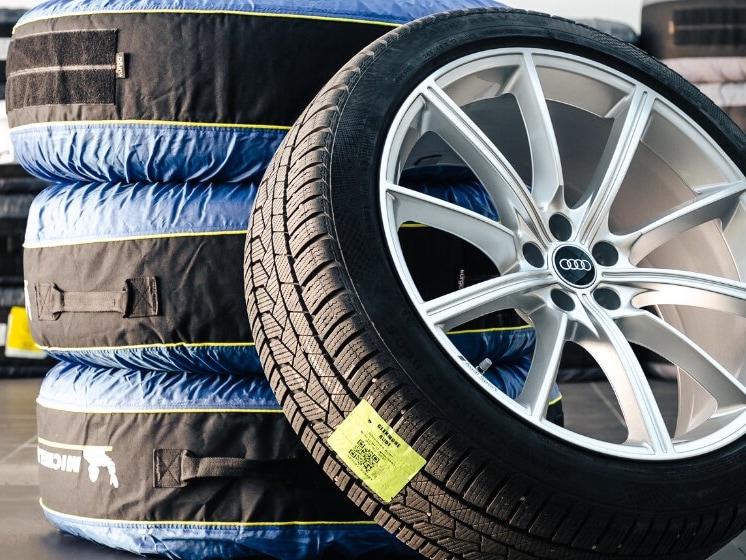
Choosing the right tires is essential to ensure safe, reliable performance across varying road conditions and seasons. Here’s a breakdown of the different types of tires and their ideal use cases to help you find the best fit for your needs.
All-Weather Tires
All-weather tires are a solid option for drivers who want reliable year-round performance in mild winter conditions. They’re designed to handle light snow, slush, and cold temperatures. Marked with the severe service emblem, these tires meet certain winter safety standards, making them ideal for occasional snowy drives, like trips to the mountains or the ski hill. Additionally, all-weather tires double as a strong summer tire, providing dependable traction across seasons without needing to switch them out each year.
All-Terrain Tires
If you enjoy a mix of on-road driving and occasional off-roading, all-terrain tires are built for you. These tires offer a balance of rugged off-road traction and smooth handling on the pavement. They feature deep, aggressive tread blocks for excellent grip on rougher surfaces, while strategically placed tread elements help reduce vibrations for a quiet ride on city streets. All-terrain tires are a great option if your adventures frequently take you off the beaten path without compromising comfort on the road.
3-Season Tires
Sometimes called “summer” tires, 3-season tires are designed for use in spring, summer, and fall. They provide a smooth, quiet ride and are built for longevity in warm, dry, or mildly wet conditions. However, 3-season tires are not suitable for winter as they become hard and lose traction once temperatures drop below 7°C. If you experience mild to moderate weather changes without heavy snowfall, these tires can be a practical choice for most of the year.
Performance Tires
For drivers seeking enhanced handling and control, performance tires are the way to go. They feature a lower profile, stiff sidewalls, and a wider footprint, which translates to improved cornering response and stability in warmer months. These tires are ideal for drivers who prioritize a sporty driving experience and frequently navigate winding roads or highways. However, performance tires aren’t suitable for cold weather or icy conditions, as they lack the grip needed for safe winter driving.
Winter Tires
Winter tires are specially engineered for the harshest winter conditions, including heavy snow, ice, and extreme cold. Made with a softer rubber compound and featuring an aggressive tread design, winter tires offer superior braking, cornering, and slush-handling capabilities. They stay pliable even in frigid temperatures, which significantly enhances grip on snow and ice, making them essential for drivers who face long, icy winters.
What Does M+S Mean on a Tire?
The "M+S" label on tires stands for "mud and snow" and is often found on all-season models. However, it’s not a certification based on actual performance testing. Instead, a tire can earn the M+S branding if its tread design has a specific amount and design of grooves or notches covering its surface. While M+S tires provide better traction than summer tires on lightly packed snow or mud, they aren’t guaranteed to handle harsher winter conditions. For drivers in colder climates, tires with the Three-Peak Mountain Snowflake (3PMSF) symbol offer proven performance in light snow, though neither M+S nor 3PMSF tires are tested specifically on ice.
Choosing Your Tires
When selecting tires, consider your typical driving conditions, climate, and performance needs. Each tire type is tailored for specific uses, so matching your tires to your driving habits will give you the safest and most satisfying ride year-round. Whether you need reliable year-round traction, off-road capability, or maximum control in snowy conditions, there’s a tire out there designed to keep you safely on the road.